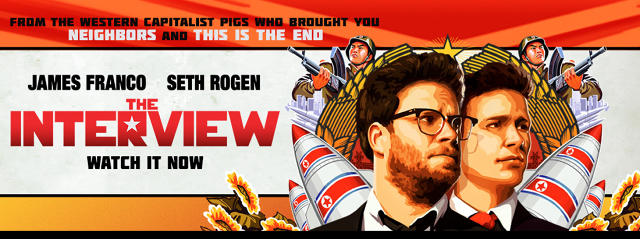Over the last few days, a silver lining has emerged from
the abnormal and sordid Sony hack saga:
The Interview, the scourged Seth Rogen comedy that indirectly undid certainly one of Hollywood’s most distinguished studios by means of hordes of leaked emails, made $15 million in video-on-demand (VOD) earnings within the first 4 days of its Christmas-day liberate. long regarded as a roughly consolation prize (or dumping floor) for stricken motion pictures, or else a platform for small, forte films that might now not resonate with all of the us, VOD all at once has a brand new, glitzy glamour. Fifteen million dollars, after all, is nothing to sneeze at; earlier VOD release “coups” have primarily been within the $eight and $9 million range. (
The Interview cost $44 million to make.) bearing in mind that the economics of VOD are a ways more favorable to studios, which best hang on to 50% of a theater ticket sale (they get 70-eighty% of VOD income) and are in a position to consolidate their advertising spends, one would think that
The Interview would herald a new age, one in which all that anytime-any place rhetoric about how we customers like to experience our content material would finally prolong to films. however does it? the reply is: kind of. “It shines a mild on the chance,” says
John Sloss, the indie movie sales agent and legal professional who was once a producer on this year’s awards movie
Boyhood. “but it surely’s an entire anomaly.” In different phrases, while
The Interview makes a powerful case for a digital free up, the circumstances surrounding it had been so odd that it’s onerous to use it as a reliable variation. An
insane media blitz ensured that no sentient person was once ignorant of what it was once and when it used to be popping out. safety concerns—threats of violence through Guardians of Peace, because the
Sony hackers are identified—made seeing the film (which additionally got here out in 331 theaters) within the relief of your living room a more engaging thought than seeing it for your native cinema. The low worth point did not hurt, either—it price $5.99 to rent the movie on services and products like
iTunes,
Xbox and
YouTube; that’s lots inexpensive than a ticket at a movie show. the biggest issue to changing day-and-date theatrical releases to VOD releases, of course, is theater homeowners, whose livelihoods are threatened with the aid of digital distribution—they’re combating the difficulty tooth and nail. In 2011, when common tried to unencumber the Ben Stiller caper
Tower Heist on VOD three weeks after its theatrical liberate, theater chains threatened to boycott the movie totally, forcing universal to cave. As that example displays, theater owners insist on an either-or stance, as opposed to the each-and technique that
The Interview acquired. Theater house owners are not the only ones frightened about VOD releases; studios are scared, too. Fifteen million isn’t bad for a bit of the revenue pie, but what if that was once all the pie? not to point out that while people are crowing in regards to the movie’s VOD haul, its field administrative center return was once a mere $2.eight million—now not surprising given how few theaters it was shown in, but nonetheless a reminder that VOD and theatrical releases do not essentially happily co-exist. “i think if the theater owners cozy their windowing, we’d see a number of big films released on VOD,” says Sloss. “lots of people believe the most appropriate state of affairs could be to have a movie in the theater for two weeks, when actual, hardcore enthusiasts would see it, and then have it go on VOD. That saves on advertising. With the three- to 4-month window you may have now, you have to do a whole new marketing push to construct awareness.”


